I don’t know about you guys, but I can never have enough greenery in my home. This includes tiny plants for small pots. Good design always has a plant or three. That being said, the outside of your home matters too. There is a ton of forest, and foliage at our cabin, and here in San Francisco which makes the entire vibe in both spaces a dream. That being said, San Francisco isn’t quite as lush. Of course, I have my favorite houseplants like the Baltic blue pothos, and the Hawaiian Pothos in abundance to bring the outside in. Unfortunately, space starts to run low in smaller homes like mine. Which got me thinking. Y’all need plants for small pots.
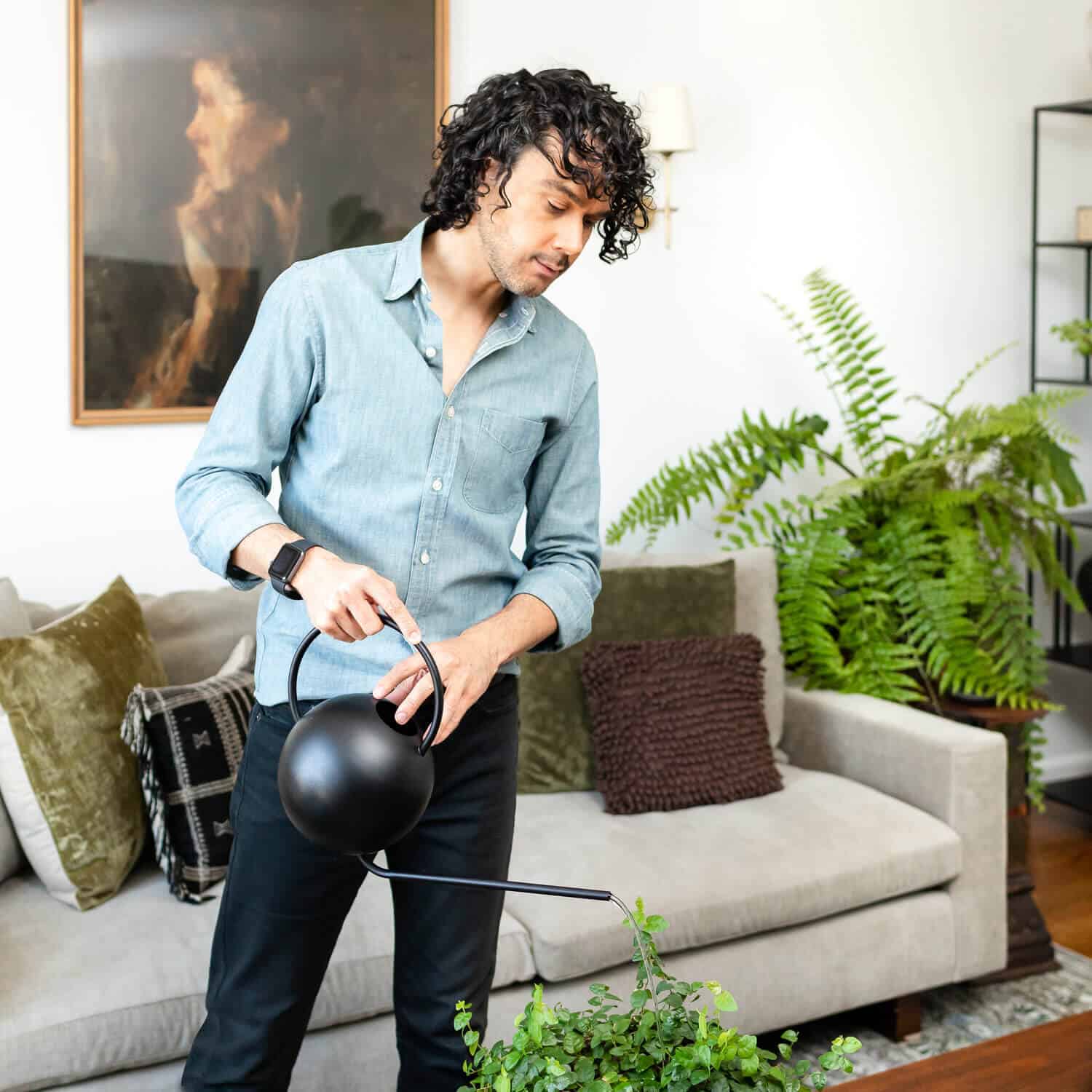
The main problem with having limited space is that it’s easy not to anticipate how much your plant is going to grow. My Ficus audrey is a great example. She is so big now! Plants like the ZZ Plant or even Lucky Bamboo might start small, but they can quickly outgrow their pot and the space around them.
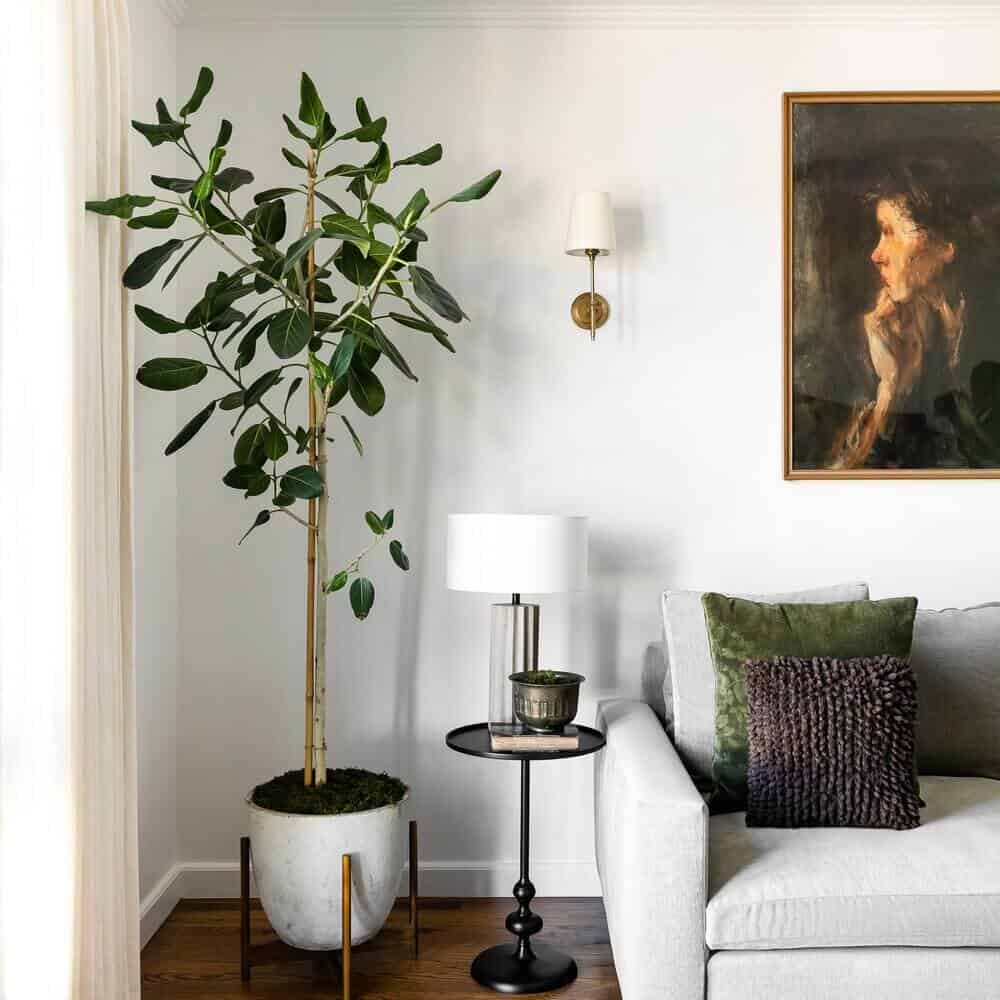
If upgrading to a larger pot isn’t an option for you—and outdoor containers are out of the question—then you’re in luck because there are plenty of indoor-friendly, pint-sized options, and I’m gonna cover them all.
The Best Plants for Small Pots to Try

Most of the plants I’ve picked out today are easy-to-grow house plants, but all of them are plants that can be grown in smaller pots. I tried to vary things up a bit, providing a mix of colors, textures, shapes, and sizes.

In the end, the right plants for your home could be a combination of the ones below, or it could just be a single plant that you end up really liking. Remember, there’s no point in picking up a bunch of plants if you won’t be able to properly care for them all. No worries though, as I’m sure you’ll be able to find something you like in the following options.
Flaming Katy Are Great Plants For Small Pots

If you’re looking for a way to add a bunch of color in small spaces then Flaming Katy plants—also known as Kalanchoë blossfeldiana—are the perfect pick. Easy to grow and flowering yearly from February to June, these are an excellent option that won’t outgrow the space.
Generally, you can expect these plants to grow to a maximum height of just under a foot with the proper care. They like bright and humid areas, although indirect sunlight is best. Try to avoid direct sunlight, as this will give them “sunburns”.
African Violets
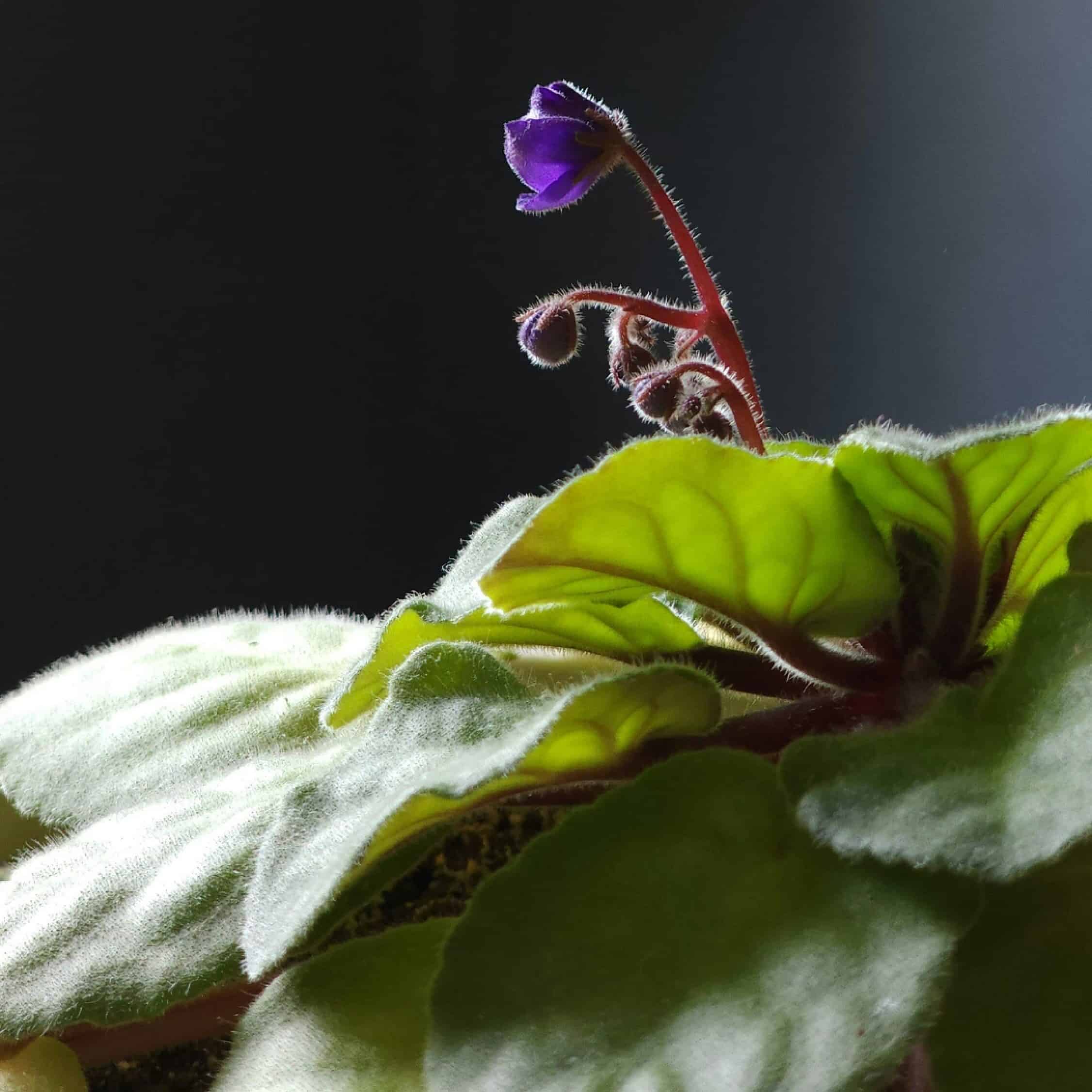
African Violets are another great option if you’re after a bit of color. Although they have the color “Violet” in their name, these plants for small pots can actually be found in various shades ranging from white to dark blue, and even reds.
Care is fairly easy, as these plants only require high humidity and temperatures ranging from 65°F to 80°F. Bright, indirect sunlight is ideal, paired with watering every seven to ten days.
Interestingly, these flowers don’t like getting water on the leaves (and doing so can harm the plant). You’ll want to either use a spout to ensure that water doesn’t get on the leaves or try bottom watering instead.
Plants For Small Pots Include the Cast Iron Plant

This next option isn’t colorful like the first two we’ve looked at, but it does have large leaves that provide a great backdrop for the more colorful plant pals on your plant shelf. While it might not be the prettiest plant, it is an extremely hardy one, making it a great option for those with the dreaded “brown thumb”.
Cast Iron Plants only need to be watered when the soil dries out. They won’t survive direct sunlight, but they excel in shade, meaning you can place them pretty much anywhere in your home without issue.
The only major weakness you’ll want to be aware of is their temperature tolerance. While these plants can manage the heat, they don’t do well in the cold. Try to keep the temperatures between 60°F to 75°, and remember that temps below 50°F can kill them.
Chinese Money Plant, Plants For Small Pots Not to Miss
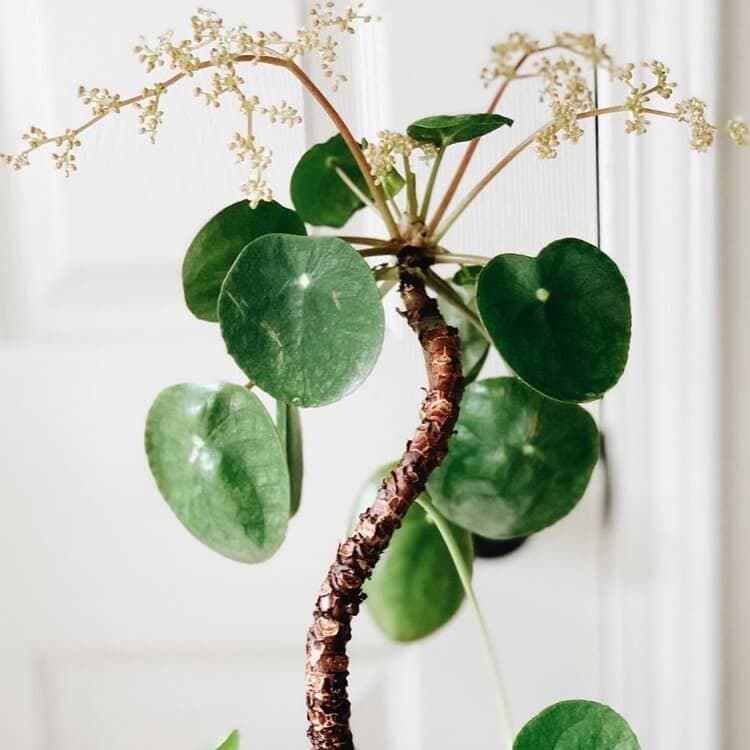
Pin this article
Pin It NowI know y’all have heard about the Chinese Money Plant before, but I just had to mention it on this list! I mean, who doesn’t want a plant that’s supposed to bring them luck, prosperity, and wealth?
Growing to a maximum of about 12 inches wide and 12 inches tall, these plants work great for people limited to small pots. The Chinese Money Plant boasts large,a coin-shaped leaves, complete with a slight shine to them. Bright, indirect sunlight will yield the healthiest leaves, while lack of sunlight exposure can lead to undersized leaves.
Technically, the Chinese Money Plant can flower indoors, but it’s fairly unlikely. Then again, you won’t know until you try, and you might just get lucky with your particular plant!
Jade Plant

If you’re looking for container plants that can last nearly a lifetime then the Jade Plant is an option worth considering. Extremely hard to kill and often lasting up to 70 years with the right care, these small succulents are initially great plants for small pots.
They can actually grow quite big—up to six feet tall—which might have you wondering why I’ve included them here. Well, thankfully, Jade Plants only grow about an inch or two a year, so the size increases should be more than manageable. You can also prune them to help keep the size down.
While I do love this plant, I probably wouldn’t recommend it to anyone who has pets unless you’re sure you can keep them away, as the Jade Plant is toxic to both cats and dogs.
Aloe Vera Are Great Plants For Small Pots

Well-known for its healing properties, easy to grow, and available in over 300 different species, Aloe Vera is an excellent addition to your houseplant collection. This plant grows fairly quickly, reaching mature size in three to four years.
You can expect your Aloe Vera to reach anywhere from one to three feet tall, with the leaves spreading up to a foot apart. Like many other options on this list, these plants prefer bright, indirect sunlight, paired with temperatures ranging from 55°F to 85° if grown indoors.
While aloe vera can definitely help heal burns, it’s still important to remember that this plant is technically toxic. The spiked leaves might help a little bit to discourage your pets from nibbling on them, but you’ll still want to keep your pets at a safe distance.
Alocasia Black Velvet
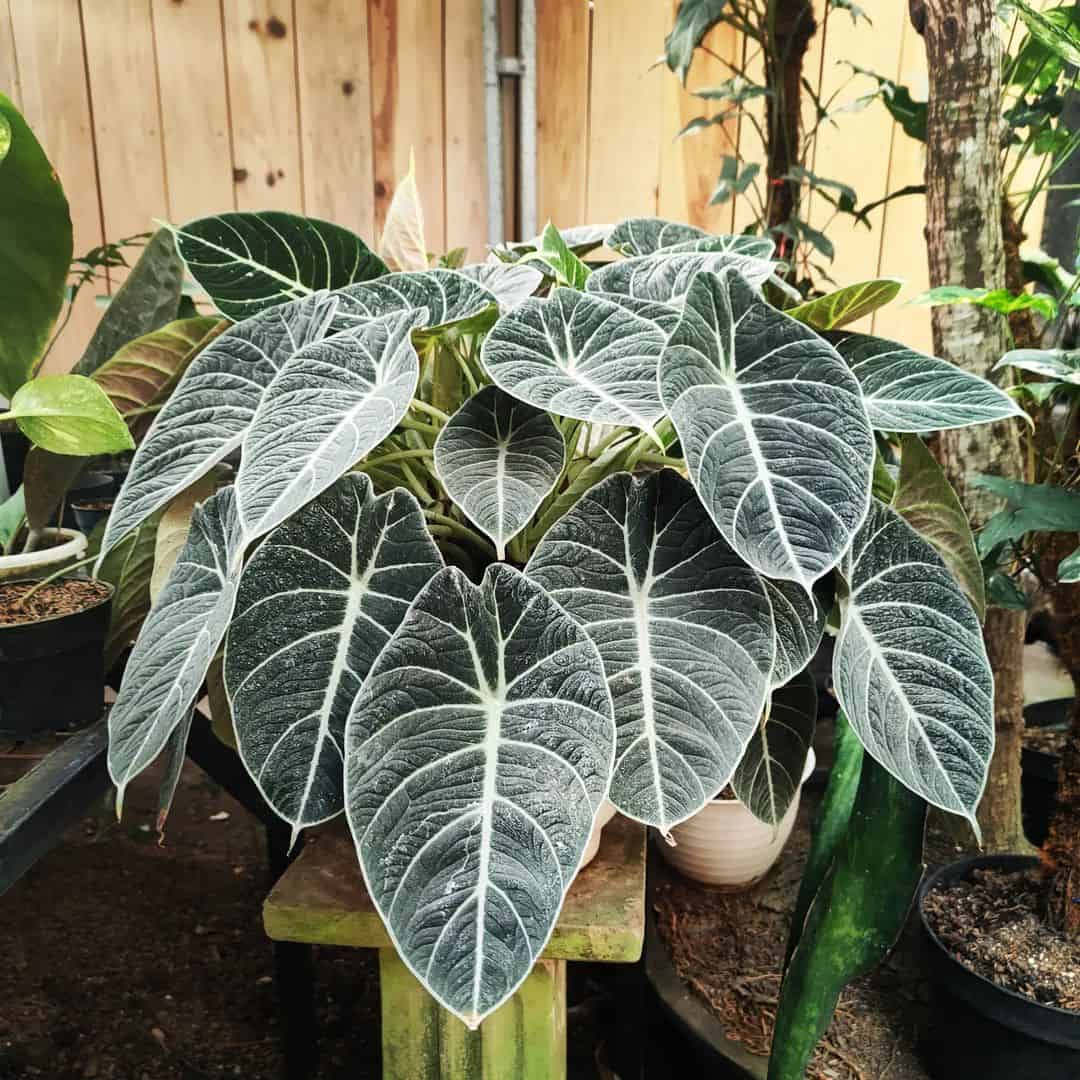
The Alocasia Black Velvet is another plant that’s best known for its unique leaves. It might not have any flowers to speak of, but the dark green leaves will help add a bit of variety to an otherwise plain, bright green leafy background.
Growing these is fairly straightforward, as they require only warmth, humidity, and semi-frequent watering. You’ll only want to water your plant when the topsoil feels dry, though, as Alocasia Black Velvet tends to suffer from root rot if left in sitting water.
Just make sure to keep your plant out of reach of your furry friends, as the Alocasia Black Velvet is toxic to both cats & dogs.
Dracaena

Next up is the Dracaena, a common and easy-to-grow houseplant. Dracaenas can be excellent plants for small pots. As long as you can keep up with the pruning, it should be possible to keep this plant small enough for your space.
That said, these pretty plants can go quite high if given enough time. As you might expect from a tropical plant, the Dracaena prefers warmer temperatures paired with higher humidity for ideal growth.
Like the previous options, though, the Dracaena is toxic to cats and dogs. While actually growing the plant may not pose much of a challenge, keeping your pets away from it might be, so plan wisely!
String of Pearls

This next option can be placed in a small pot on a windowsill, although I think they look best in a hanging planter or at least on a dedicated plant shelf The String of Pearls is beginner-friendly, low-maintenance, and can last up to five years without any propagation.
The main thing the String of Pearls needs is bright light. Unlike many other popular houseplants, partial shade won’t be enough for this stringy, beaded succulent! Instead, you’ll need to give it a mixture of direct and indirect sunlight for six to eight hours per day for the best results.
Make sure to water your plant when the soil gets dry, which should be every one to two weeks. Good drainage is a must, as the String of Pearls doesn’t do well with excess water. Unfortunately, like many other houseplants, this one is poisonous to pets as well, so place yours accordingly.
Baby Toes

After a cute, adorable plant that won’t even break a foot once it’s fully grown? If so, then the Baby Toes is the succulent for you! Growing up to a maximum size of only three inches, this tiny succulent is definitely worth considering if you’re running out of dedicated plant space.
These small plants are relatively low-maintenance, requiring only the occasional watering and full sun. When it is time to water them, don’t worry about using too much water. Instead, soak until you have moist soil, and keep going until water comes out of the drainage holes. Once that’s done, wait until the soil has dried out before watering your plant again.
Not everyone can agree if the Baby Toes are toxic to pets. Nonetheless, I’d still recommend exercising caution, although the lack of confirmed toxicity definitely works in favor of this tiny plant.
Polka Dot Plant

The Polka Dot Plant is a variegated beauty that’s safe for pets! These plants are extremely easy to grow. They’re considered an invasive species in some warmer climates like Australia (though you won’t run into any restrictions in most of the states).
Generally, the plants for small pots grow to about a maximum of two feet tall and two feet across. Indoors, they prefer partial exposure to sunlight and require monthly fertilizing during the spring and summer months.
For better or for worse, these plants don’t have a very long lifespan. Still, you can expect to get one to two years from your Polka Dot Plant before needing to replace it.
Anthurium

Another great tropical option is Anthurium. These plants are a bit more picky than most of the other plants on this list, but they look absolutely stunning with the proper care. Unfortunately, they are toxic (so you’ll want to keep your pets at a safe distance).
These plants prefer well-drained soil, temperatures above 60°F, and bright light. As usual, indirect light is best, so avoid direct sun exposure at all costs. You can expect to water your Anthurium about once a week when indoors, after the top of the soil has dried out.
These plants do require a bit more care than many of the other options I’ve shown you, but I think the beautiful white, red, and pink flowers you get as a reward for your efforts are more than worth it!
Cacti

Cacti is the perfect plant if you want something that can be grown hands-free. They thrive in full sun and only need to be watered every ten days or so. Just give them a bit more water once the soil has dried and you’re good to go!
The main issue you might run into is the temperature requirements. You’ll want to keep temperatures between seventy and eighty during the summertime, but cacti generally prefer cold temperatures of around fifty-five degrees during the winter.
Fortunately, humidity requirements are more than manageable, with many cacti preferring humidity between 40% to 60%. If you have pets then I recommend doing a bit of research beforehand. While not cacti are poisonous to pets, some are, so you’ll want to know this before picking up a new plant.
Nerve Plant

The Nerve Plant is one of my favorite plants for small pots! The leaves feature colored veins, which you can find in green, pink, white, silvery-white, and even red.
Since they generally grow to less than six inches tall, they’re perfect for people with limited space. True, the spread can grow up to 18 inches, but this should still be manageable for most.
You’ll need to pay close attention to humidity, temperature, and water requirements with this plant. The Nerve Plant does best in temperatures exceeding 70 degrees with high levels of humidity, making it an excellent option for the bathroom. You’ll want to keep the soil damp—but not wet—at all times.
Air Plant
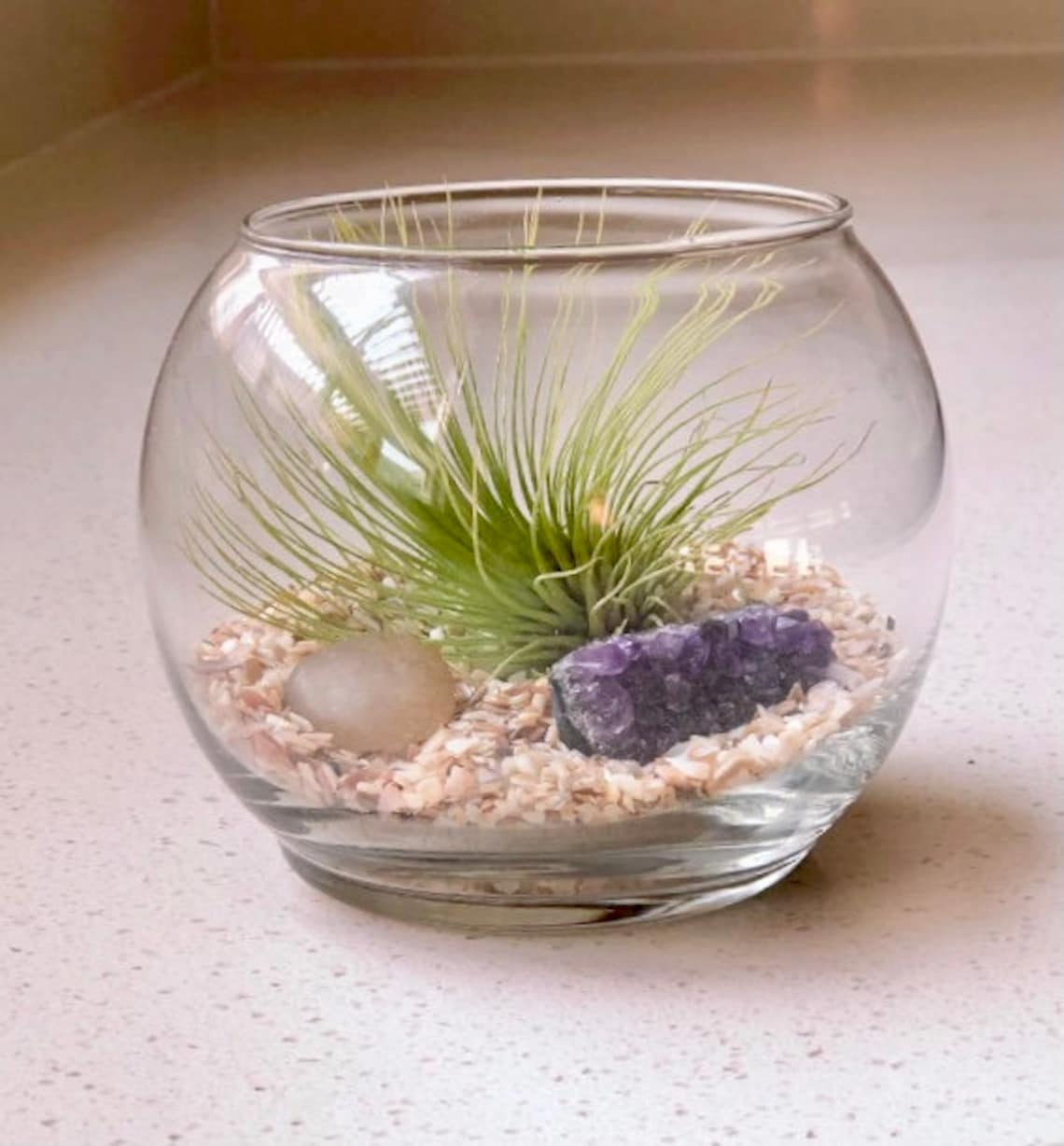
Really want to expand your plant collection beyond the basic types of pothos plants and other common options? Then you’re sure to love the Air Plant, which is easily the most unique pick on this list! Whereas most plants require soil to grow, Air Plants do not. Don’t worry though, as the maintenance requirements are very low.
These plants prefer indirect light, as direct sunlight can burn their spiky leaves. Some plants can simply be soaked in water for a watering routine, but others may respond better to mistings instead. I recommend doing a bit of research for your specific Air Plants, as best practices vary between the species.
Air Plants aren’t too picky about the temperature, so regular indoor temperatures should be fine. However, you should put them in high-humidity areas if you want them to really thrive.
Picking the Right Pots
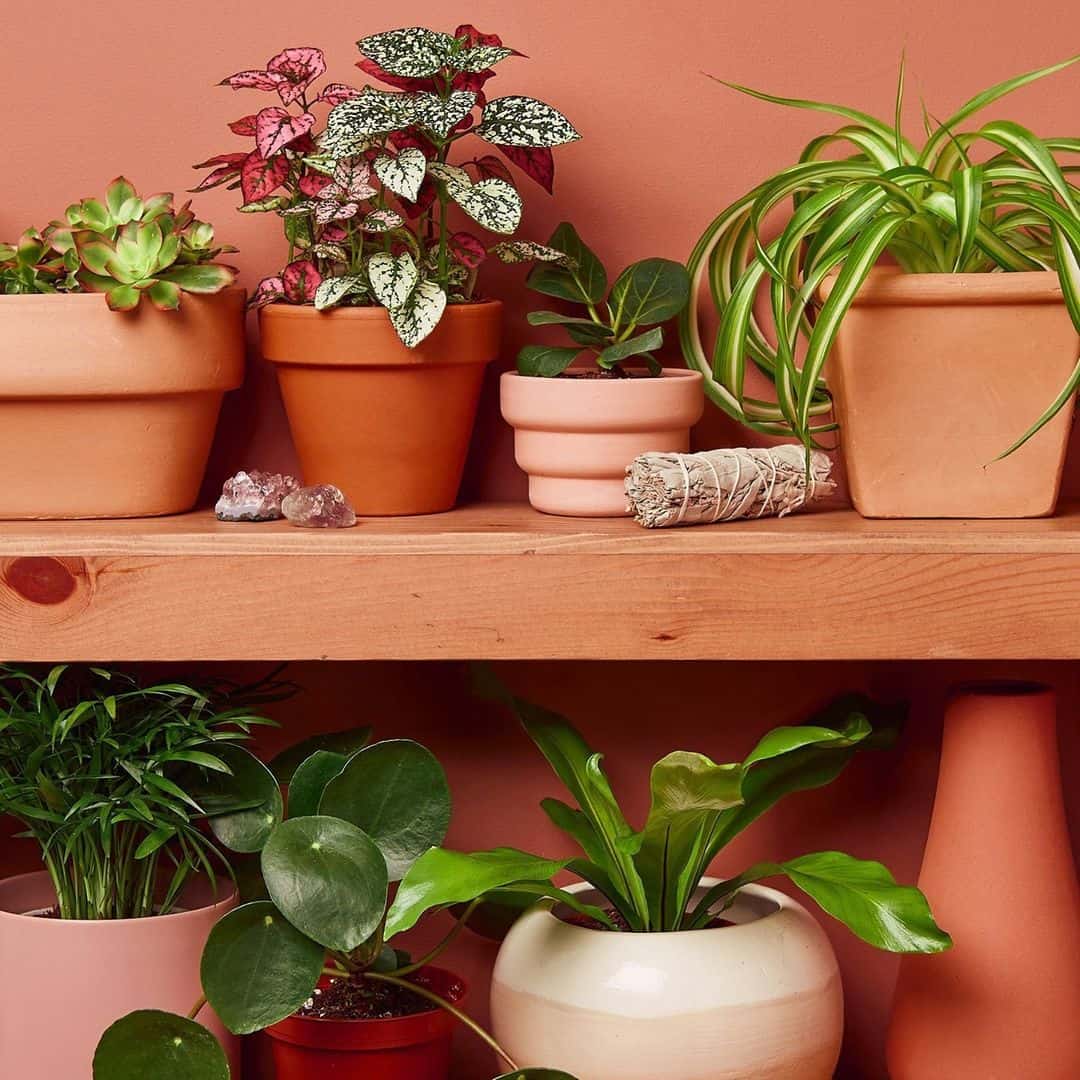
Just a last little section here, because—let’s be honest—it’s important to pick the right pot for the job when considering different plants for small pots!
First, research the watering needs of your specific plant(s). Just like with kitchen herbs, optimal setups will vary from plant to plant, so don’t just assume that there’s a one-size solution.
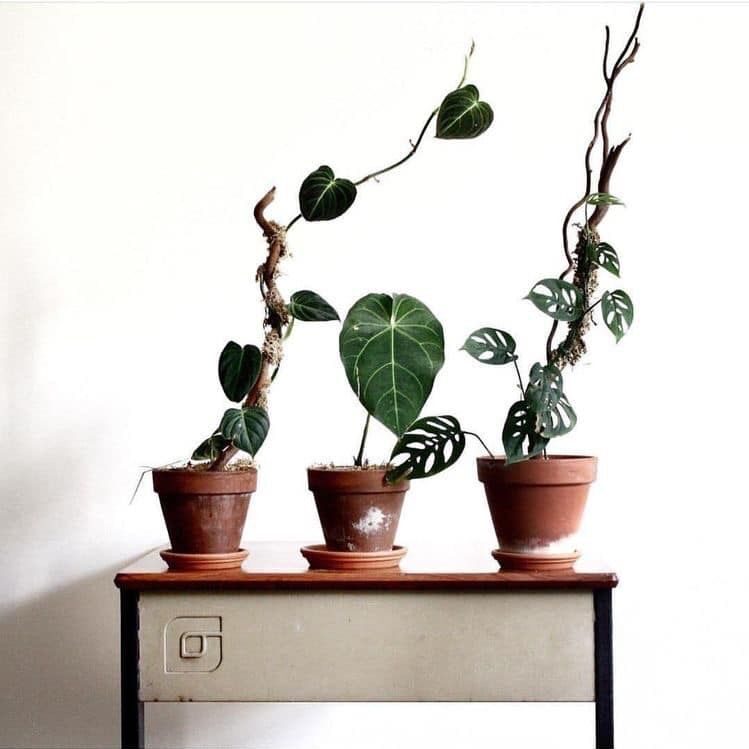
If you can’t find the information you need or aren’t quite sure what you’re looking for, I recommend checking out your local garden center.
It’s not a guarantee, but in my experience, the staff at those places has always been helpful. Whether you need small pots, large pots, ceramic pots, terracotta pots, or something else, chances are, they’ll be able to point you in the right direction.
Popular Plant Posts
Final Thoughts
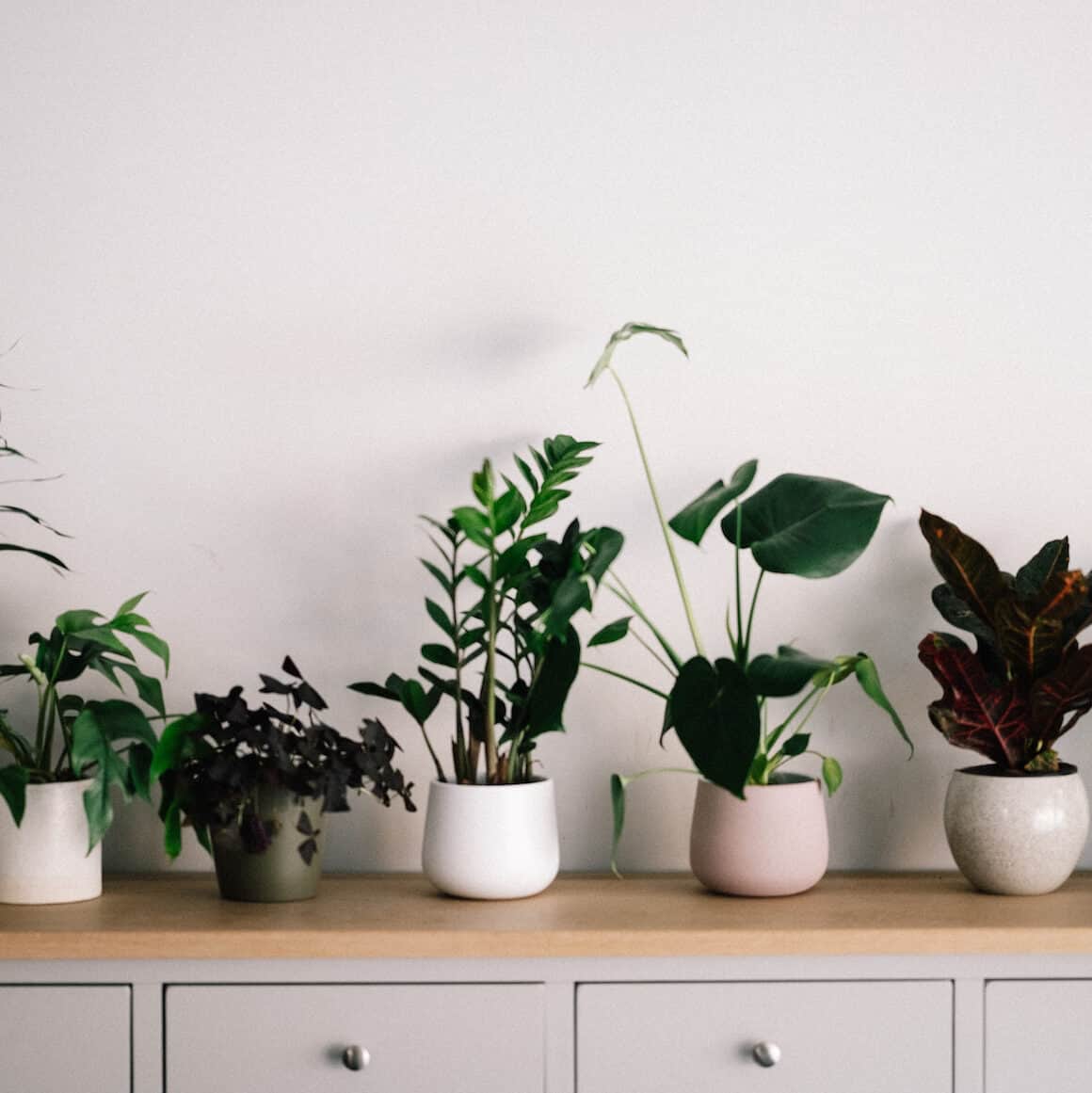
Speaking from experience, I know it can be a bit disappointing when you realize that all of the plants you wanted require large pots. Fortunately, I hope you’ve learned that even if you’re limited to small plant pots, there are still plenty of diverse options for you to choose from!
The best plants for small pots will really depend on you, your home, and your living situation, but I think I’ve given you plenty of great options to get started with. Most of them won’t even give you issues with plant pests, although you will need to take extra care if you have pets around your home.
So, which plant(s) did you like best, and are you planning on picking any up? If so, let me know in the comments below, and we can share in our plant passion together!
Frequently Asked Questions About Plants for Small Pots
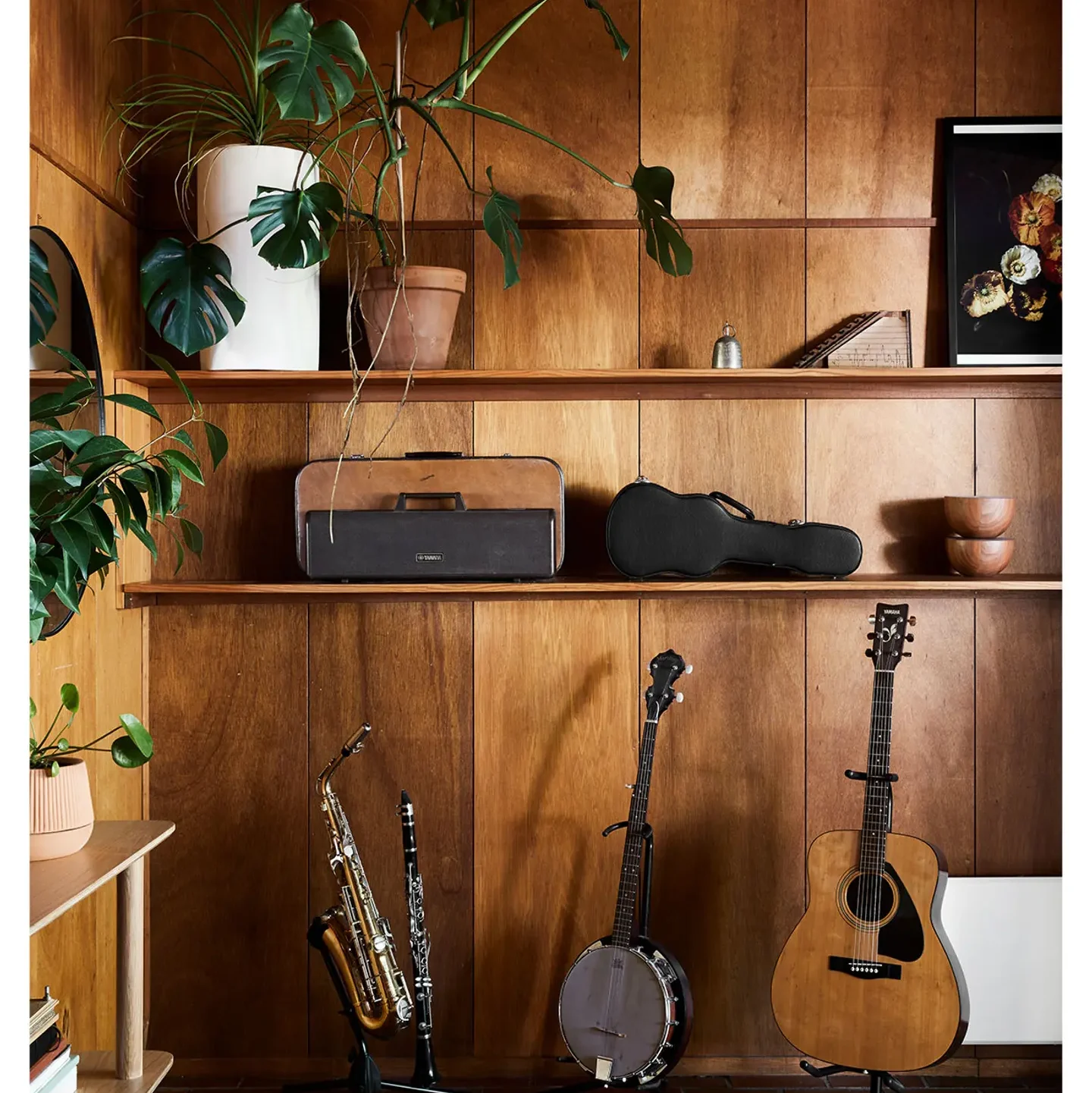
As you’ve seen, there are quite a few different plants that can thrive in smaller pots. However, for extra small pots, I’d probably recommend sticking with small flowers like African Violets, succulents, or herbs (if you wanted to grow something practical).
If you’re planning on working with limited living space for a while then you’ll definitely want to pick up a plant that won’t outgrow your space. A few nearly-no-grow options I’d recommend are Baby Toes, Air Plants, and Zebra Plants.
Well, the main purpose of terracotta pots is to help remove excess water. Some pots even have drainage holes to help with this. As such, you won’t want to grow anything that requires a lot of moisture in these pots, but dry-environment plants like cactus and succulents will do well.
There are many different alternatives to a terra cotta pot, although each one will excel at a different thing. Need something budget-friendly? Plastic pots are a great option! Want something decorative? Consider ceramic pots. You’ll want to keep them out of the sun, but metal pots are an excellent alternative as well.
It depends on the plant(s) in question. Small and large indoor plants that prefer drier conditions will be better off with unglazed ceramic flower pots, while those who prefer a bit more moisture will do best in a plastic pot.

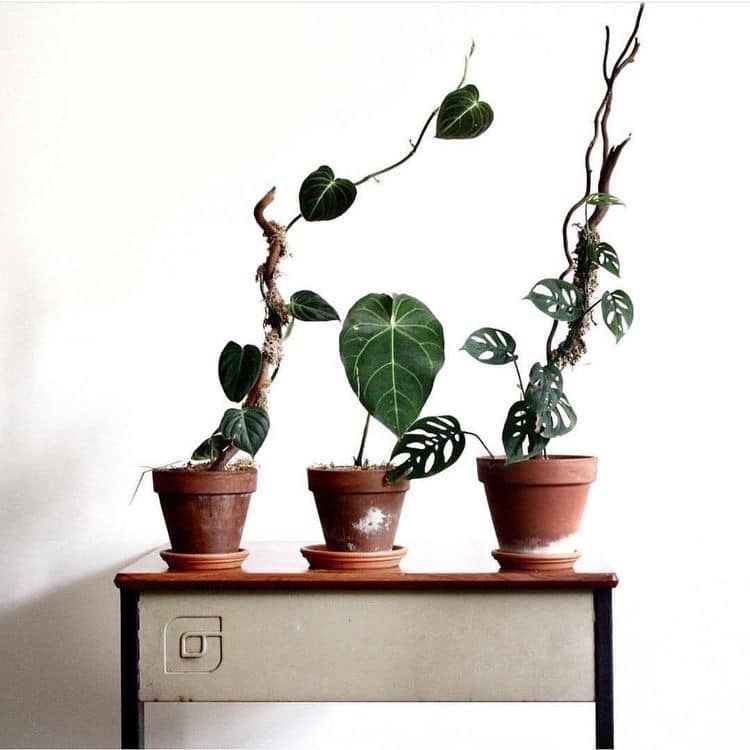




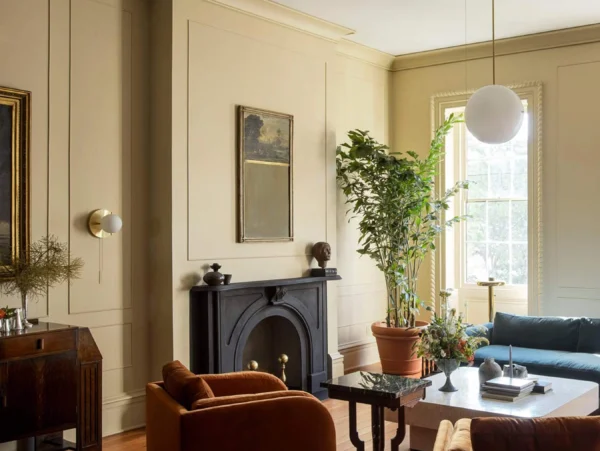












Nerve plants are a perfect gift too! They’re easy to take care of and are more elevated for rhat special someone.